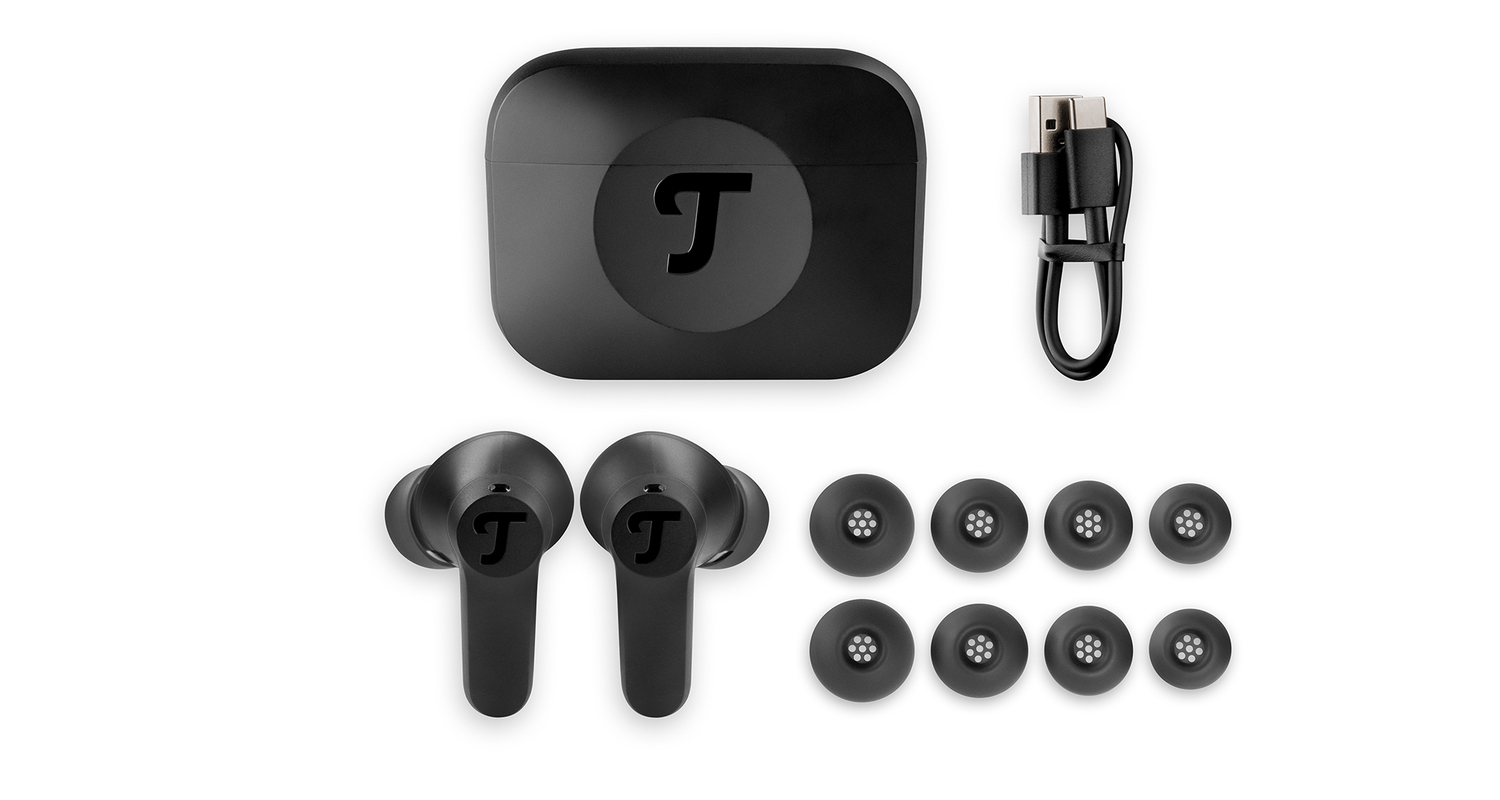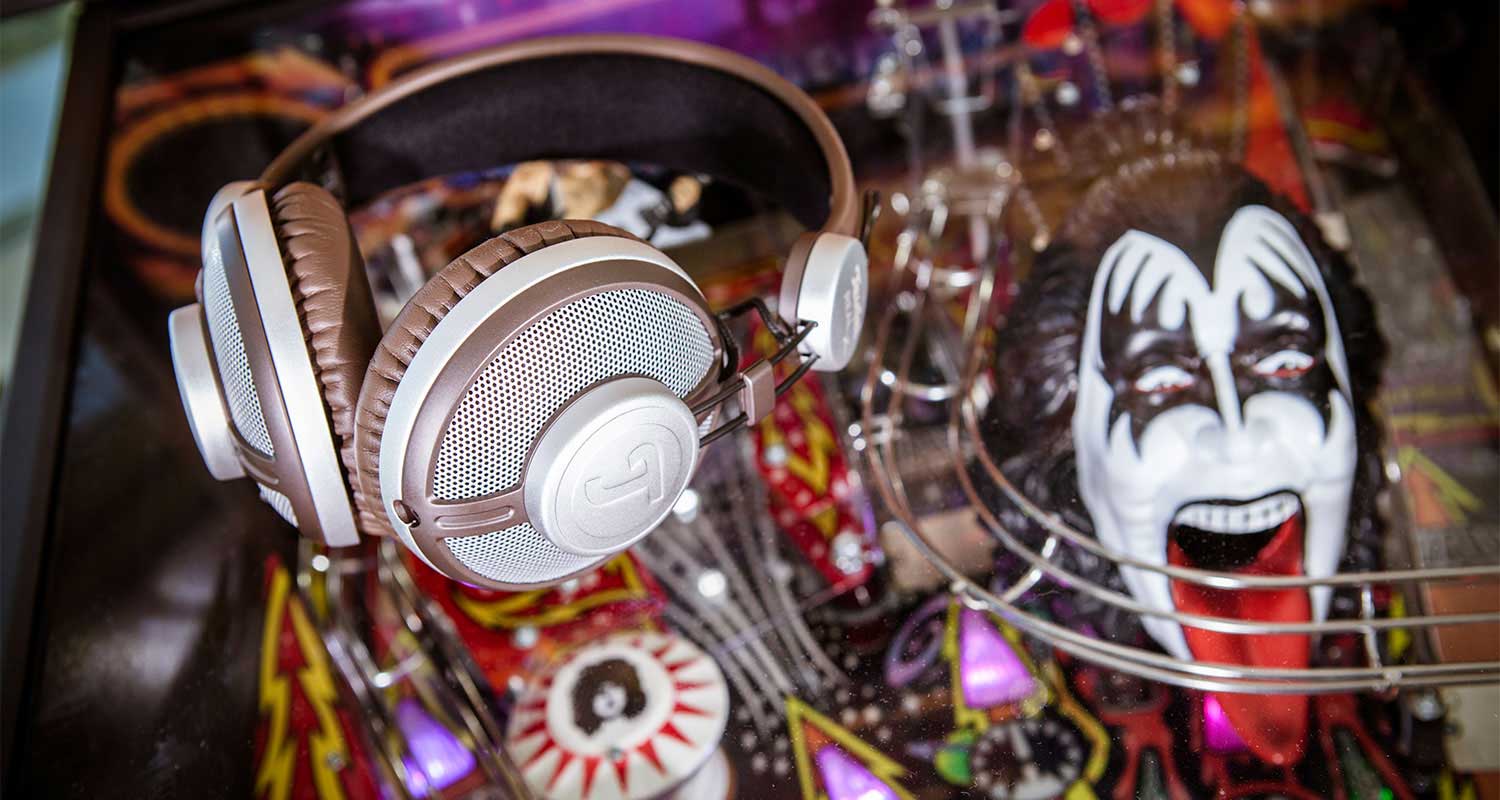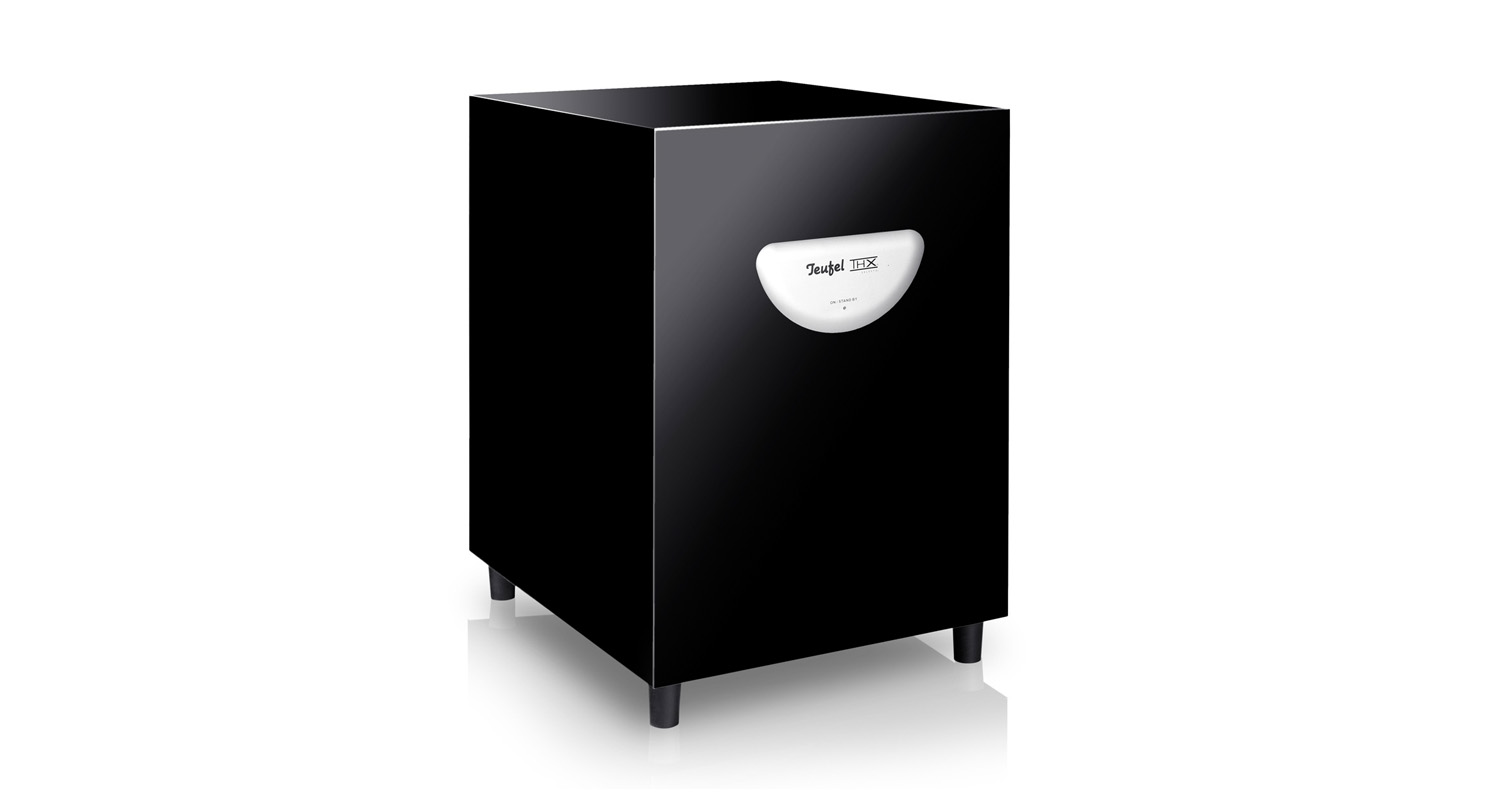You know the problem: You’re on a flight with a screaming baby and/or rampaging toddler and you simply can’t hear your music unless you turn it up really loud. Your ears can withstand an onslaught of decibels from time to time, but continuous exposure to high sound levels will damage your hearingOpens in new tab. The effect can also be very much the opposite of the pleasurable moment you were aiming for: Pure stress. This where noise-cancelling and noise-isolating headphones come in. Let’s begin with noise-isolating headphones.
Noise-isolating headphones: The passive route to silence
While “noise-cancelling” and “noise-isolating“ sound very similar, the way each method goes about blocking ambient sounds is underpinned by distinctly different approaches. Noise-isolating headphones block sound waves from reaching your eardrum by forming a good tight seal in the case of in-ear headphones, or a firm fit against your head and a good deal of padding in the case of on-ear headphones. While in-ear headphones generally do a better job of blocking noise, this is only the case if they fit snuggly inside the ear canal. That’s why many manufacturers of in-ear headphones offer a selection of ear pieces to choose from. Some extremely high-end manufacturers even make a mold of the individual wearer’s ear canal and product custom made ear pieces for an exact fit. In general though, all headphones can be said to have noise-isolating properties as all reduce ambient noise to some extent.
Noise cancelling headphones: The active route to silence
As their name suggests, active noise-cancelling headphones (ANC headphones) don’t simply create a barrier to sound – they actually fight sound waves with sound waves. In order to understand this process, it’s important to understand the nature of sound. All sound is made by air that is subjected to waves of pressure. To denote the phases of the wave, one speaks of compression and rarefaction. We can conceptualize this process by depicting sound as a sine wave – regularly repeating oscillations whereby the crest of the wave represents the compression and the trough rarefaction.
If two separate sound waves are emitted that have the same pattern of troughs and peaks, they are said to be “in phase.” The effect will be that the overall sound is enhanced. If, however, sound waves with opposing peaks and troughs – that is to say, with peaks and troughs at 180 degree angles to each other – meet, they will cancel each other out and no sound will be heard.
Noise cancelling headphones work by using a microphone to pick up surrounding sound which is then processed: The frequency and amplitude of the sound is calculated and sound waves that are out of phase to those received are then produced by the headphones’ drivers. This means that the headphone is producing two types of sound waves – the audio you feed it as well as an out-of-phase copy of the ambient sound around you. The result is that you only hear your music and not the ambient noise. Well, almost. This technology is not perfect and works better with lower frequency sounds. In an airplane, for instance, the droning of the jet engines will be nearly completely eliminated but the screaming baby will still be discernable, though at reduced volume. There are also differences between manufacturers and at various price points.
Don’t forget: ANC stands for Active Noise Cancellation
In order to process ambient sound and produce a corresponding “anti-sound,“ noise-cancelling headphones include small computers that require batteries – either rechargeable or disposable – to run. When these run out, the headphones continue to function as headphones, but their noise-cancelling function ceases to operate. In addition to power demands, the ANC function requires a degree of space. With on- and over-ear headphones, this is in the ear piece itself; with in-ear headphones, the processing unit is usually located in the cable and looks similar to a larger in-line remote.
So what’s better? Noise-cancelling or noise-isolating headphones?
At first glance, it would appear that headphones using small processors to actively block ambient noises are superior to headphones that merely use physical means to block sound, but it’s not so simple. ANC technology is new, still developing and – as already mentioned – not perfect. For instance, the frequency spectrum is unevenly blocked with more of the upper end coming through. For this reason, a good pair of noise-isolating headphones can actually achieve a very similar result – without a battery to replace or charge and usually for less money.
In an article comparing noise-cancelling and noise-isolating headphonesOpens in new tab, the hi-fi journalist Steve Guttenberg tested both varieties in the New York City subway. Anyone familiar with this system will be aware of the deafening screeching noise the trains make as they round corners as well the general rattling and clattering they manage to produce with every turn of their wheels. In the end, Guttenberg acknowledges a newfound respect for noise-cancelling headphones, a technology he initially felt some skepticism towards. He also admits, however, that most noise cancelling headphones don’t sound quite as good as a pair of normal hi-fi cans at the same price point and so recommends careful consideration of where one primarily listens to music before buying.

Coda: Noise Cancelling headphones create an oasis of calm for music enjoyment
Noise cancelling headphones do a pretty good job of decreasing ambient noise so that you can enjoy your music without cranking up the decibels to dangerous levels. However, because they are more expensive, require battery power and may not sound as good as a pair of regular headphones, you might want to consider sticking with the old fashioned variety or try a noise-isolating pair. These will simply give you better sound for the buck since no money is deferred towards the sophisticated technology that goes into active noise cancellation. However, if you are a frequent flyer, use the NYC subway or are subjected to any other clamorous environment on a regular basis, you may find noise cancelling headphones create a pleasant oasis inside your head for the enjoyment of music.
All other pictures: Property of Teufel Audio





